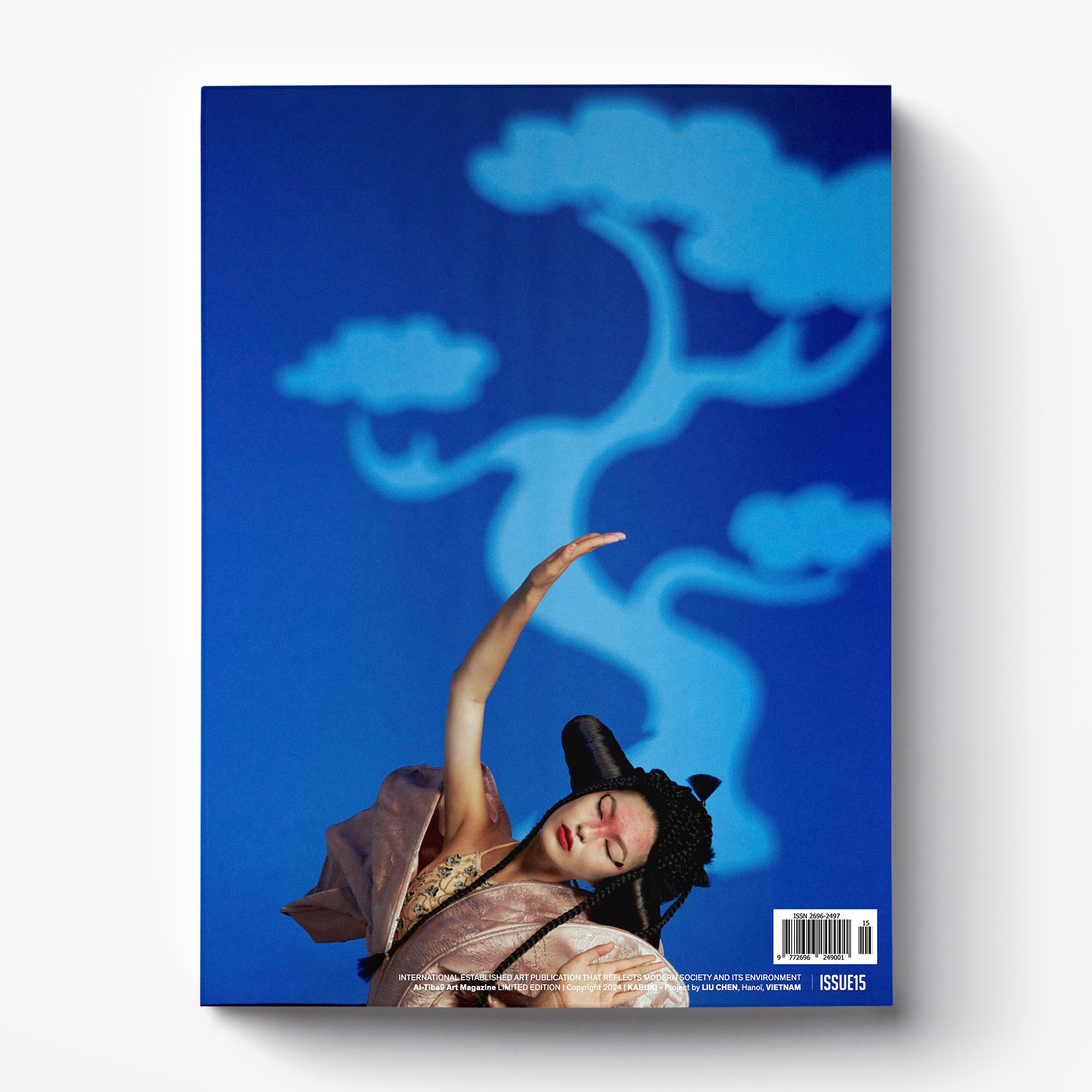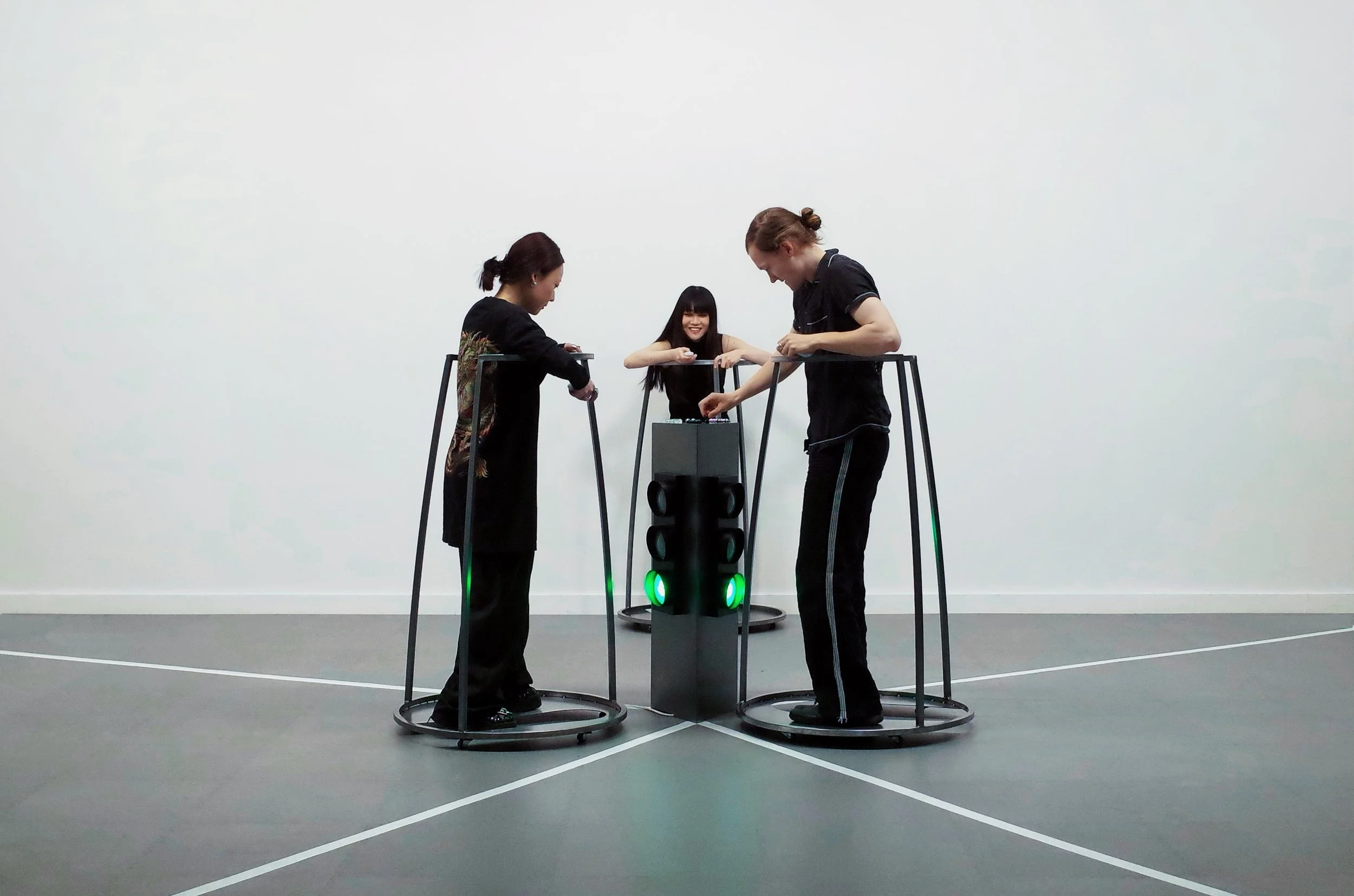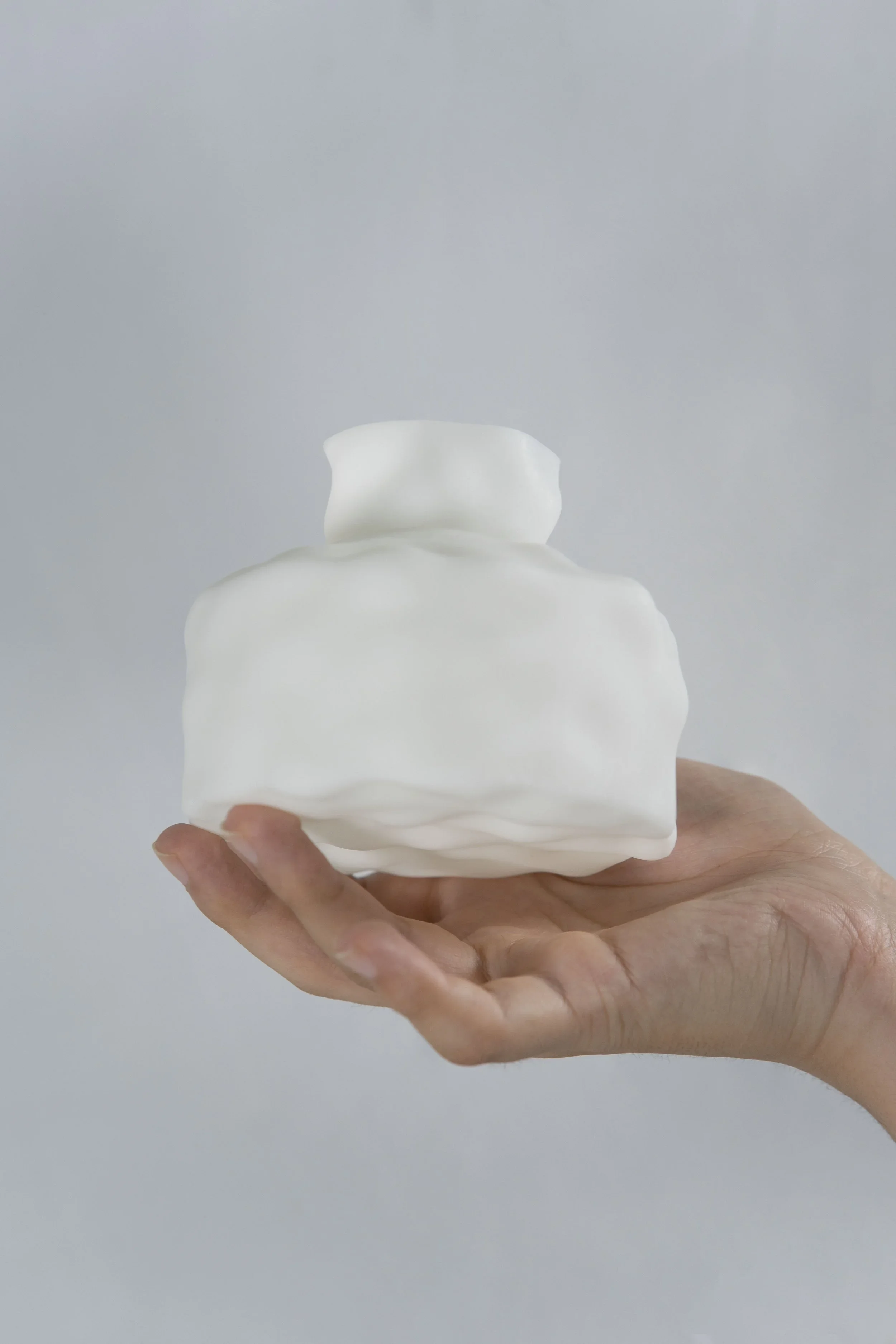10 Questions with Gøneja ✷
Gøneja ✷ is a photographer and totemic sculptor based in Berlin. He has published in international magazines and has released two monographs, “Together We Dance” (2018) and “Rituals” (2020), both distributed by Motto. His work has been exhibited internationally, including group shows in London, Copenhagen, and Munich, two solo exhibitions in Berlin at tête (2020), and Organ Kritischer Kunst (2022).
Gøneja ✷ - Portrait by Ema Discordant (2021)
ARTIST STATEMENT
“My practice stands as an artistic quest to capture and represent the contemporary possibilities of spirituality within the global urban context. I combine classical photography of unorthodox subjects and totemic sculptures with minimalistic forms in order to unfold new mythological narratives. Therein, I explore occult themes such as alchemy, spiritual initiation, and ritualism, striving to deliver a central holistic message through a plurality of idiosyncratic individual voices. Symbolic motifs from sources as diverse as classical mythology, zodiacal astrology, and Christian iconography make their way through my exhibitions as vivid portraits, tribal objects, and mysterious landscapes. Spirituality, to me, is ultimately a means to discern contemporary mythological possibilities and to unravel them in my work as active magical forces.“ - Gøneja ✷
Spirit Monad, Cast iron & steel, 79x29x19 cm, 2021 © Gøneja ✷
AL-TIBA9 ART MAGAZINE ORIGINAL ISSUE15
INTERVIEW
First of all, introduce yourself to our readers. What is your background, and when did you start experimenting with art?
I feel that my artistic path began more as an initiation rather than an experimentation. Six years ago, I left my advertising career and stable life in London and moved to Berlin to establish my artistic practice independently and as self-taught. This city embodied the freedom I needed as a driving force for my work, and the process has been unfolding every single day since.
How has your artistic practice evolved over the years?
With photography in the early years, I was mostly focused on portraiture, and my approach had a rather editorial mindset; it was infused with narrative and conceived with print media in mind, like books and magazines, accompanied by text. Whereas now, my photography has evolved into a rather conceptual practice with artistic ambitions: it incorporates a wider range of subjects, including architecture and still life, and aims towards fewer but more powerful compositions that can stand singularly as gallery pieces.
On the other hand, when it comes to my sculptural training, things began rather experimentally. In Spring 2020, I started creating totems out of wood and ground some of these mysterious objects anonymously inside Berlin’s parks during a series of overnight guerrilla actions. Back then, I did not have any real sculptural ambition, and I was rather interested in creating a sort of urban mythology around them. However, the excitement to work with a three-dimensional medium grew very fast, and the following year I switched to metal and started to elaborate the technique enough to include some of these pieces in my following exhibition.
Bunker, Inkjet print mounted on plate, black shadow box frame, 73x89x4 cm, 2021 © Gøneja ✷
Spomenik, Inkjet print mounted on plate, raw steel shadow box frame, 80x120x4 cm, 2021 © Gøneja ✷
What would you like the viewers to experience in front of your work?
I would like them to experience the aesthetic integrity of the work and for an honest reaction from their side to come out of the encounter.
Your latest project, Mercurial, has many references, from alchemy to philosophy. What are the main sources of inspiration for your work?
This work was indeed an exploration of the territory of alchemy. From that literature, one name that pops to mind is the theosophical philosopher René Schwaller de Lubicz, who spoke about, among other things, the alchemical thought and symbolism inscribed within the sacred architecture of the Temple of Luxor, where he lived.
Yet, the majority of my sources for this series come primarily from the film world. A television production worth mentioning is Neil deGrasse Tyson’s astrophysics science series Cosmos: A Spacetime Odyssey, which helped me contextualise the cosmological perspective of alchemy. On another level, the animated series Castelvania contains some truly alchemical references culminating with the quest for the magnum opus at the end of the last season.
This series contains photographs and totemic sculptures. How do you approach these two different media? And what do they represent to you?
With photography, I’m pushing for a classical language. In general, I avoid experimentation aiming for a rather technically and artistically skilled image. I am also keeping far from the realm of abstraction, focusing solely on a figurative language within the boundaries of portraiture, landscape, and still life.
With sculpture, however, I am employing a rawer type of language infused with a grittier urban feel showcasing my freedom to experiment and to act spontaneously. Sculpture, to me, still very much represents a totemic practice that enables me to engage with my tribal mind and the minimalism of abstraction.
Untitled & Spirit Taurus, Steel on wooden platform, 191x24x24 cm and 185x50x15 cm, 2021 © Gøneja ✷
What messages would you like to communicate to your viewers?
I believe that the core essence of my artistic message lies within the spiritual world. Plainly put, spirituality is something that simply belongs to my life, and I am driven to develop my ability to capture and represent this world artistically.
What is your creative process like? Could you walk us through a day in your studio?
There is no day like another. Each piece has its own demands and therefore requires discovering and engaging with its own methods.
Portraiture requires a lot of location scouting, given the peculiar nature of the spaces I use. Landscape comes with careful travel planning around the specific climatic conditions necessary for my work. Editing and grading never take more than a couple of days, it is easy for me to select the compositions that illustrate the ideas more clearly, and I keep retouching to a minimum.
With sculpture, the process begins by visiting the scrap trade sites and flipping through discharged metal pieces to rescue and collect. The actual construction usually takes about two days spent in the workshop cutting the pieces, trying out the right proportions, and welding them together in their final form.
Marat + Ester: Pietà, Inkjet print mounted on plate, yellow shadow box frame, 61x75x4 cm, 2020 © Gøneja ✷
Berenice, Inkjet print, 54x63 cm, 2021 © Gøneja ✷
Over the past years, we have witnessed a growing number of online exhibitions and events. What do you think of the recent changes in the art world? Do you see more opportunities now?
Honestly speaking, online exhibitions is something I am just genuinely uninterested in. As an independent artist, finding suitable real-life gallery spaces for my exhibitions has required plenty of work and persistence. Nevertheless, this is something I will always be ready to fight for.
There is just a certain magic in visiting an art exhibition which I believe can only really happen live in the space occupied between the viewers and the physical work.
Through space distribution and sound design, my gallery installations are conceived as meditative places where the work can be experienced at a slower pace. Printing is also a central part of my photographic process. I believe it is by bringing the images on paper into their most harmonious proportions that you make them truly alive. The soft texture of the cotton papers and the saturation of information achieved with medium-format cameras are also artistic qualities you can only really grasp when you stand in front of the printed word. With sculpture, too, given the minimalistic forms of the pieces, the physical volume and their proportions are central elements of their expressive power.
Do you have any upcoming shows or collaborations you are looking forward to?
There will be an entirely new solo exhibition in Summer 2023, for which the work is already underway. I’m also planning to expand my group show presence and look out for more international opportunities.
And lastly, what is one lesson you learned in the past year?
I have learned to trust the artistic process and allow it to unfold in its own rhythm. I strive for constantly higher standards, but I also have to account for the time and space for my skills to develop organically. Personally, I understood that the key to this balance lies within my ability to stay humble and driven and to focus on the quality of the work rather than its quantity.


























